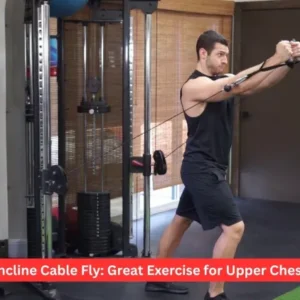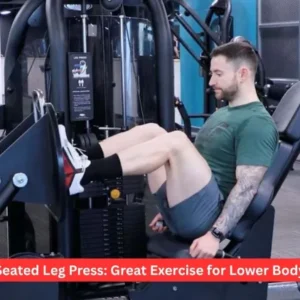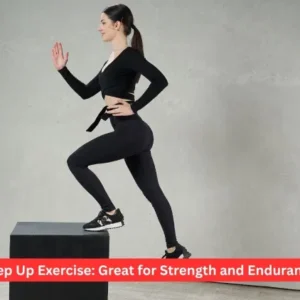The most effective exercise regimens are ones that are balanced in strength, cardio, flexibility, and rest. Simple bodyweight training is best Workout Routines when one is a beginner. HIIT and cardio-strength mixes are effective with regard to fat loss. In order to gain muscle, such splits as push-pull-legs or upper/lower are effective. Compound lifts and relatively organized training, such as 5x,5 are used by strength athletes. Intensity is as insignificant as recovery, mobility, and sustainable progression. An intelligent plan must suit your ambitions, ways of life, and allow rest to avoid overtraining.
It may feel like the most daunting task to find the most suitable workout routines, given that there is much contradictory information online. Some are interested in shedding some pounds, others wish to gain some muscle, and most individuals just desire to be healthy. The fact is that there is no universal routine. The best workout is the one that suits your goals and fitness as well as your lifestyle.
We will discuss successful starting workout programs, fat loss, muscle building, strength, and flexibility, as well as necessary guidelines, advice, and solutions to the frequent training questions in this guide.
Why Choosing the Right Workout Routine Matters
The most effective exercises offer organization and order, and they will not allow you to spend your time in vain in the gym. They also minimize the chances of being injured, enhance motivation, and establish a long-term way of achieving results.
- Orderliness and Focus, a system of actio, removes confusion and keeps you on task. As an example, to do workouts, you can get an idea that in 3×10, 3 is the number of sets and 10 is the number of reps.
- Balance – Cardio is necessary to keep the heart active, strength to keep the muscles strong, and mobility to keep the body moving.
- Progression -With time, weight, reps, or intensity is added to stop plateaus.
- Sustainability Overtraining is a waste. Adhering to such rules as the 85 per cent effort rule or the 90/10 balance (90 per cent discipline, 10 per cent flexibility) can be consistent without burnout.
The best routine is one that can be sustained in the long run without harm and motivation.
Best Workout Routines for Beginners
- When you are new, you need to learn to go right, develop endurance, and establish a routine.
- Full-Body Circuit (3 Days a Week)
- Push-ups, squat, light cardio, and lunges.
- Basic jostures learn shape and establish power.
- Most beginners can be trained every 3 days, and this is considered time to recover.
30-Minute Bodyweight Routine
- Mountain climbers, jump jacks, sit-ups, and glute bridge.
- Best when working out at home with no equipment.
- Novices cannot afford to spend 3 hours in the gym. Brief and concise sessions are much more efficient.
Best Workout Routines for Weight Loss
Your workouts should maximize calorie expenditure while maintaining muscle mass in order to burn fat.

High-Intensity Interval Training, or HIIT
- For instance, ten repetitions of 30 burpees followed by 30 seconds of rest.
- Saves time and increases metabolism even after exercise.
- The idea behind this approach is to work hard in short bursts rather than for hours at a time.
Strength + Cardio Combination
- Switch between cardio exercises like cycling, rowing, or running and weightlifting.
- Stops muscle loss, a common occurrence with cardio-only regimens.
The “3-2-1 rule”—three strength days, two cardio sessions, and one flexibility/mobility session per week—also applies to this kind of training.
Best Workout Routines for Muscle Gain
Progressive overload and organized programs are necessary for muscle growth.
- Six Days a Week: Push-Pull-Legs Split
- Push: triceps, shoulders, and chest.
- Pull: Biceps, back.
- Legs: calves, hamstrings, and quadriceps.
Gives growth-oriented training volume that is balanced.
- Four days a week, the Upper/Lower Split
- One day, the upper body, the next, the lower body.
Perfect for people who wish to build muscle and strength without going overboard.
- German Volume Training, or 10×10 Training
- One main lift, ten sets of ten repetitions.
- Extremely hard but good for building muscle.
Rules such as “4-8-12” (using rep ranges of 4, 8, and 12 across sets) and the idea of lifting about 85% of your maximum effort help optimize growth when you’re training for size.
Best Workout Routines for Strength
The heavy compound lifts and consistency help to build strength.
Powerlifting Routine
- Squat, bench press, deadlift, and overhead press.
- These exercises are referred to as the big, nd they are used to work large muscles.
5×5 Training Plan
- Five to heavy weight sets of five reps.
- Establishes raw power and foundational power.
Even a single 4 heavy reps may suffice to get strong as long as it is done with the utmost effort and accompanied by rest after it to avoid injury.
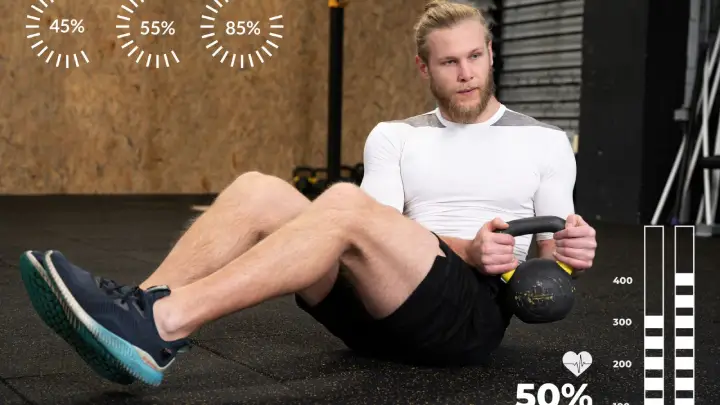
Best Workout Routines for Flexibility and Recovery
Mobility and recovery should not be ignored as they are crucial to performance in the long term.
Yoga Flow (2–3 Days a Week)
- Warrior pose, downward dog, Sun salutations.
- Enhances flexibility, balance, and control of stress.
Stretch & Mobility Routine
- Pre-workout dynamic stretches, post-workout static stretches.
- Helps to avoid injuries and helps recover.
Such exercises as planks, donkey kicks, hammer curls, and superman exercises not only work on specific muscles but also on the posture and general functionality.
Key Training Rules and Concepts to Know
In the fitness culture, you will come across terms and rules that are likely to sound confusing. Some of them are explained naturally:
- Golden Rule of the gym- Train hard, but train smart, do not trade form to weight.
- 3-3-3 Rule -Basic balance of life: 3 hours of exercise, 3 meals, 3 times of rest every day.
- 20-20-20 Rule -At least every 20 minutes of sitting, take a 20-second walk and stare at something 20 feet away- best on a desk.
- 90/10 Rule – Be strict 90 percent of the time, be loose 10 percent.
- Perfect Routine -Focused on a balance of pushing, pulling, cardio, mobility, and recovery.
- Best Daily Routine- This involves exercise, a healthy diet, and sufficient sleep.
- Night Workouts- It is not a problem to train at three or even ten pm, so long as you are regular and you are not disrupting sleep.
- Overtraining -Training excessively without rest. Such indicators are sleepiness, insomnia, and reduced productivity.
How to Perform Essential Moves
Most effective fitness programs have core exercises. The following are some of them done right:
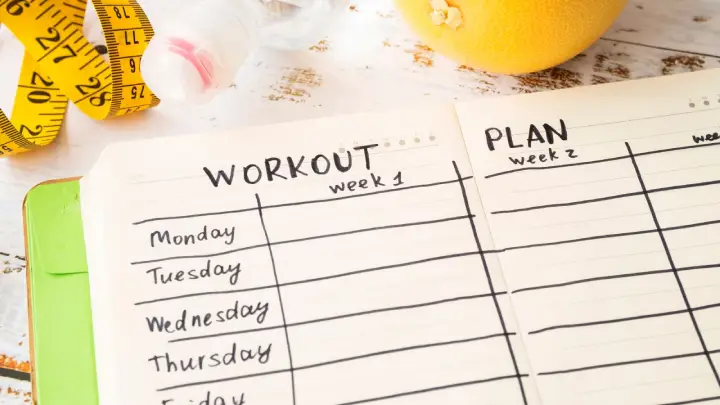
- Diamond Push-Ups – Put hands in a diamond position with hands at the bottom of the chest, and then push downwards, and then push upwards. Targets triceps and chest.
- Superman Exercise- Lie on your back, then at the same time, raise your arms and legs up, but do not touch the ground, hold, then put them back. Strengthens the lower back.
- Plank for Abs – Elbows should be below shoulders, keep it straight, and as long as possible. Builds core stability.
- Donkey Kicks- On all small squares, kick backwards one leg and up, glutes squeezed at the top. Great for glute activation
- Hammer Curls -Grasp the dumbbells with the palms facing each other and curl them. Targets biceps and forearms.
These exercises may be incorporated into virtually any program to provide variety and to work the various muscles.
Tips for Following the Best Workout Routines
Exercise with focus- do not go aimlessly to the gym.
- Meetings are 45 to 90 minutes; 3-hour marathons are not needed.
- Give rest days – abs and calves are muscles that can be trained more frequently, but the larger the group, the more it requires to rest.
- Give at least 812 weeks to have a plan before making any big changes.
- Use a journal or app to keep track of your progress.

Final Thoughts
The best workout regimens are created to fit your goals, fitness level, and lifestyle rather than trying to replicate someone else’s approach. Balance, progression, and consistency are crucial whether you’re following a beginner-friendly circuit, an HIIT plan that burns fat, or a structured split for muscle growth.
Follow the golden rule: have fun, get enough sleep, and train wisely. Finding a rhythm you can stick with for years is what makes a perfect routine, not pushing your body to the limit every day.
Frequently Asked Questions
Which exercise regime is the most effective?
The best routine is the one that combines power, cardio, stretch, and recovery in the long term.
What is the 3-2-1 rule in the gym?
It translates to 3 strength days, 2 cardio days, and 1 day of flexibility every week to a balanced workout program.
What is the best 7-day workout?
The 7-day push-pull-legs split that includes a cardio session, yoga, and a rest day is a healthy workout.
What is the 4-8-12 rule in workouts?
It is performed in 4, 8, and 12 reps, respectively, in a single workout: strength, muscle growth, and endurance.



